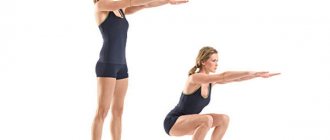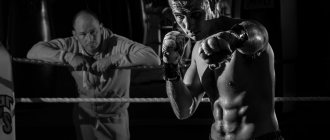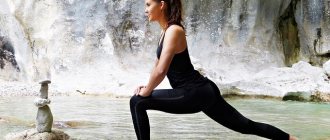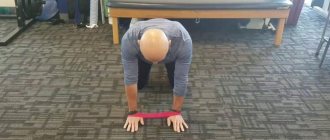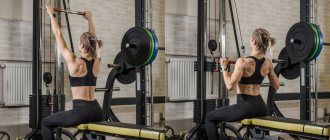A sedentary lifestyle is the scourge of our time. Lack of movement provokes the development of a huge number of diseases, among which the leading positions are occupied by pathologies of the musculoskeletal system and especially the spine. The disorders progress slowly and initially do not manifest themselves in any way. The first symptoms usually occur when the disease has already led to significant changes requiring immediate medical intervention.
As part of the conservative treatment of spinal diseases and the prevention of their development, people are often prescribed physical therapy or exercise therapy. Often it is one of the components of complex treatment and is complemented by physiotherapy, manual therapy and drug treatment.
What is exercise therapy
Therapeutic exercise involves an individually selected set of exercises to prevent the development of degenerative-dystrophic processes in the spine or stop the progression of existing ones. Exercise therapy classes are simple, accessible to people of any age, do not require much time and can usually be performed at home.
Patients are prescribed a set of exercises selected in accordance with their age, type and characteristics of the disease, level of general physical fitness and a number of other factors. Depending on the goals pursued, all recommended exercises can be divided into 3 groups:
- for decompression – they involve stretching the spine in order to increase the spaces between the vertebrae and eliminate the pressure of anatomical structures on the nerve endings;
- to increase mobility - aimed at increasing the flexibility of the spine, reducing the likelihood of strangulation of hernias, nerves and blood vessels, as well as eliminating muscle spasm;
- to strengthen the muscular-ligamentous apparatus - help to increase muscle strength and strengthen the muscle corset, which can create reliable support for the spine and reduce the load on it.
Therapeutic exercise is useful both for a completely healthy person and for people who have already been diagnosed with a particular spinal disease. In all cases, it is called upon:
- eliminate or at least reduce back pain resulting from compression of the nerve roots;
- strengthen the muscle corset;
- eliminate increased pressure of the vertebrae on the intervertebral discs;
- accelerate the course of metabolic processes and regeneration processes of cartilage tissue and bones;
- eliminate mobility restrictions;
- speed up recovery after injuries and surgeries;
- improve posture.
In addition, regular physical therapy exercises will help relieve stress, improve mood, concentration, performance and give you energy for the whole day.
Postoperative gymnastics
It is impossible to create a universal set of therapeutic exercises that would be suitable after any operation. The complex is determined by the doctor depending on the organ undergoing surgery. In general, after surgery it is recommended to do exercises that the patient should have mastered before the procedure. It is allowed to begin physical therapy exercises approximately 1-2 hours after the patient recovers from anesthesia. These include:
- Exercises to help teach the patient proper breathing.
- A regimen of light gymnastics, the exercises of which involve small muscles, lasting 3-5 minutes and frequency 3-4 times a day.
- More intense physical activity from the 2nd day after surgery, represented by therapeutic exercises, which are determined based on the disease.
General recommendations for exercise therapy classes
For each patient, a set of exercises is developed individually by the doctor and may include exercises taken from different techniques. It is impossible to independently choose the optimal mode and intensity of exercise for yourself, since only a specialist can give a correct assessment of all factors and choose those exercises that will only bring benefit and will not cause harm.
The first classes are conducted under the supervision of a specialist in physical therapy. He monitors the correct execution of each exercise, and will also be able to accurately determine the required number of repetitions. This is extremely important, since improper execution can lead to aggravation of the patient’s condition.
In order for the exercises to bring maximum benefit and not cause harm, the following recommendations must be followed:
- Exercise therapy classes are conducted daily, systematically over a long period of time. All exercises are performed comprehensively. Otherwise, you should not expect positive changes.
- Physical therapy is done in the morning and sometimes in the evening. Therefore, you need to make it a rule to set aside time every morning to complete the entire complex. In the morning, patients are usually prescribed to do a set of active exercises, and in the evening, stretching, muscle relaxation and relaxation exercises are recommended.
- Rushing during exercise therapy is not appropriate. Each movement must be performed smoothly, without sudden movements, and must be completed to the end. If any exercise is difficult, you should not simply refuse to do it. In such a situation, it is better to consult a doctor so that he can select an effective replacement that is more appropriate to the patient’s capabilities.
- The load is increased slowly so that the muscles gradually become stronger. If you stay at one level of physical activity, the results achieved will gradually disappear. But an increase in load should be discussed with a specialist and, with his help, determine the available limits of your capabilities.
- Every movement should be confident, but smooth. Jerks, jolts, sudden movements will only lead to aggravation of the patient’s situation, and thoughtless exercises, even with a large number of repetitions, will not give good results.
- Exercise therapy should be approached with caution and without fanaticism. Their goal is not to build muscle mass, but to maintain back health and improve blood circulation.
- The muscles are first warmed up by light exercise or by taking a hot shower.
- Clothing should be light, not restrict movement, made from natural materials and moderately warm, especially if classes are held outdoors.
- The last meal should be at least 1–1.5 before the start of exercise.
- Before engaging in exercise therapy, you should not take painkillers, as they will block the transmission of pain impulses and will not allow the patient to stop in time.
- During exercise, you should maintain even breathing.
Starting your workout
If you want to learn in more detail how to warm up for the back, and also consider practical tips, you can read an article about this on our portal.
To avoid serious injuries, all exercises for the spine and back are recommended to be performed under the supervision of a specialist. As a last resort, such control is needed only for the first time, and then gymnastics can be done at home. As a rule, therapeutic exercises activate only the rhomboids and latissimus dorsi muscles, but this is enough, because only these two muscles are responsible for supporting the body in an upright position.
Warm-up
All exercises, regardless of the area being trained or level of preparation, should begin with a warm-up. Only if the muscles are well warmed up can injuries be avoided. To do this, it is enough to allocate 5-10 minutes of time. Starting position for warming up: stand straight, place your feet shoulder-width apart.
A set of stretching exercises
Each warm-up element must be performed at least 5 times:
- standing straight, alternately bend forward, backward, right and left. All movements must be smooth;
- rotate your shoulders first forward, and then change direction;
- Raise your shoulders up as much as possible and, fixing them at the top point for 1-2 seconds, slowly lower them;
- straighten your right arm in front of you, and your left arm behind you. Swing your arms back and forth;
- place your hands on your waist and rotate your hips, first clockwise and then counterclockwise;
- keeping your legs straight, lean forward and try to touch the surface of the floor with your fingers;
If bending forward with your legs straight leads to pain under one of your sit bones, you may have injured the tendon. - Raise your hands and take a deep breath. Then slowly lower your arms while exhaling.
It is advisable to repeat the entire warm-up complex again in order to properly warm up the muscles. Many experts recommend performing the “running in place” exercise during warm-up. Only after this can you begin the main training.
Running in place
Prices for orthopedic sports shoes
Set of exercises
For therapeutic exercises, you will need a foam mattress used during yoga classes or a soft carpet. As with the warm-up, it is recommended to perform these exercises at least 5 times. Training duration is 20-30 minutes. This is enough to fully work out all the muscle groups of the back. Below are step-by-step instructions, following which you can strengthen your back muscles and spine.
Table. Therapeutic exercises for the back at home.
| Steps, photo | Description of actions |
| Step one | Lie on the floor with your stomach down. Then raise your legs and head at the same time. Pausing at the top point, slowly lower your head and legs down. |
| Step two | Roll over onto your back and, bending your knees, place your hands with your palms on the floor. Slowly raise your pelvis, and then lower yourself just as slowly. |
| Step three | While lying down with your stomach down, place your palms on the floor, keeping them in front. Then lift the upper part of the body and lower it smoothly. At the top point you need to linger for a few seconds. |
| Step four | Keeping your legs straight, lean your body forward and touch your hands to the floor. In this case, the upper half of the body and arms should be on the same line, forming a right angle with the legs. In this position, stretch your back muscles as much as possible, and after 5-10 seconds return to the starting position. |
| Step five | The exercise is called the “plank”. To perform it, you need to rest your elbows and toes on the floor, while straightening your body. You need to freeze in this position for 30 seconds. In this case, not only the back muscles are activated, but also the legs, arms, shoulders, and also the abs. |
| Step six | The final exercise of the treatment complex for the back is the fetal pose. To do this, sit down on your knees and press your head as close to the floor as possible, and stretch your arms in front of you. In this position, you can stretch your back muscles well and relieve stress from them. |
On a note! All of the above exercises are aimed at correcting posture and strengthening the muscles of the back and spine. It is especially important to perform them for those people who lead a sedentary lifestyle.
Contraindications
Although regular moderate physical activity is very beneficial for the spine and the body as a whole, in some cases it is not recommended to engage in physical therapy.
- acute infectious diseases;
- atrioventricular block;
- oncology;
- mental disorders;
- uterine and other bleeding;
- high risk of developing thrombosis or embolism of blood vessels;
- severe disturbances of cerebral or coronary blood flow;
- serious diseases of the cardiovascular system;
- respiratory failure.
In some situations, only certain types of exercise are prohibited. Therefore, in order not to harm yourself, you should still trust the development of the exercise therapy complex to a specialist.
It is necessary to stop exercising and consult a specialist if pain occurs while performing an exercise.
Therapeutic physical education does not involve overcoming oneself and performing exercises through pain. Not a single exercise should bring pain, and their occurrence indicates an incorrect selection of exercises or a violation of the technique of performing them.
It is worth postponing exercise therapy classes for a while if:
- development of complications of existing spinal disease;
- exacerbation of a chronic disease;
- arrhythmia and surge in blood pressure;
- getting injured.
As soon as the patient's condition improves, physical therapy can be started or resumed. The load is increased gradually, without trying to achieve past results, especially during the recovery period after injuries or surgical interventions.
Indications
The list of indications for the use of physical therapy includes a large number of diseases of the musculoskeletal system, nervous, cardiovascular and other systems. In each case, an individual program is selected that will allow influencing the diseased organ. In general, therapeutic physical culture is indicated for:
- curvature of the spine;
- paralysis;
- rehabilitation after surgery;
- orthopedic diseases;
- post-traumatic recovery;
- neurological diseases;
- paresis, manifested by weakening of organs;
- diseases of the heart and blood vessels.
Exercise therapy for the cervical spine
For disorders in the cervical spine, the main efforts are aimed at strengthening the neck muscles. Initially, exercises are prescribed to activate blood circulation. At the second stage, classes are directly therapeutic in nature, and at the third they are aimed at consolidating the achieved results.
Traditionally, exercises for the cervical spine are performed from a position lying on the stomach or back on a hard surface. The following can be cited as basic ones. Starting position – lying on the floor with straight arms and legs:
- Raise your head 10–15 cm from the floor, fixate in this position for 10 seconds, and then smoothly lower to the starting position. Repeat 3 times.
- Place the hands on the shoulders and make circular movements with the elbows in both directions so that on each side they touch the floor 4-5 times. The exercise will be repeated 5 times.
- Hands are raised up so that the fingertips are strictly directed towards the ceiling. Then the shoulder blades are lifted off the floor enough to create tension in the neck muscles. At first, repeat up to 8 times, but gradually it is recommended to increase the number of repetitions.
- Straight arms are moved behind the head. As you inhale, bend your legs at the knees and press them to your chest, and extend your arms forward. As you exhale, return to the starting position. It is important that your head is pressed to the floor at all times. Repeat 6 times.
- Press the back of your head onto the floor, maintaining a tense state for about 4–5 seconds. Repeat 6 times. During the exercise, some discomfort may occur in the back of the head, but in this case it is acceptable.
- The head is lifted off the floor and turned to the left, fixed for 5 seconds, turned to the right and fixed again for 5 seconds. Repeat 6 times with a 1-2 minute rest break between repetitions. If it is difficult to hold your head for 10 seconds, the exercise can be divided into 2 stages: raise and turn your head to the left, hold, lower and then raise your head again, turn to the right, hold and lower.
- Hands are placed on the belt, and legs are bent at the knees. As you inhale, press your knees to your chest, and as you exhale, return them to their original position. Repeat 5 times.
Starting position – lying on your stomach:
- The hands are joined into a lock and folded at the back of the head so that the elbows are parallel to the floor and the forehead rests on the floor. The head is raised and held in an elevated position for 5 seconds. Repeat 4 times.
- Imitate crawl style swimming 8 times.
- Place your palms in a lock and place your head on them. The legs are bent at the knees, trying to reach the buttock with the heel.
Video
Tibetan therapeutic exercises for the back
Chinese joint gymnastics
Chinese joint gymnastics exercises can be performed by people of any age. The movements in the complex are simple and effective, and do not take much time. The purpose of such gymnastics is to strengthen the joints, spinal column and intervertebral discs. Movements must be made softly and smoothly. They will help normalize the production of fluid between the joints, improve the functioning of the thyroid gland, rid the body of salts and rejuvenate it, and get rid of excess weight.
Chinese joint gymnastics helps restore not only physical, but also psychological health of a person. It is used to improve mood, gain self-confidence, vigor and willpower. You need to start gymnastics classes with simple exercises, training for 20 minutes a day. The best time for this is the morning. When performing, watch your breathing and posture.
Chinese joint gymnastics involves the use of the following exercises:
- tilting and rotating the head (about 25 times in each direction);
- circular movements of the hands counterclockwise and clockwise, mill (45 times each);
- swing your legs without support (40 times in each direction);
- tilts, pelvic rotation and body rotations should be performed 45 times in each direction;
- jumping, squats, pull-ups and push-ups can be done in any quantity as long as you have the strength.
Gazmanov’s gymnastics for the spine
The famous singer has experienced many injuries, but remains strong and vigorous. For problems with the spine, Gazmanov recommends performing a special set of exercises. Each movement in it should be done 5-10 times. The starting position is a lying position, arms are lowered along the body, legs need to be slightly spread. It is then recommended to perform the following steps in order:
1. Bend your leg at the knee joint and lift it slightly. Straighten the limb along the femoral line, leaving it at the same angle. The next step is to slowly lower your leg. Do the exercise first with each leg in turn, then with both legs at once.
2. The second exercise is based on the same principle as the first, but the legs should be straight.
3. For the next gymnastics exercise, perform a “bicycle”, counting full revolutions.
4. “Scissors” - lift your legs up at an angle of 45 degrees, spread them slightly to the sides. Bring one limb over the other alternately.
5. Do a reverse bicycle, moving your legs towards you.
6. Lower and raise your legs alternately.
7. Bend your lower limbs at the knee joints, turn all the way to the left, leaving the body motionless. At the same time, move your arms to the right. Turn your head towards your feet, move your gaze to an imaginary point located at an angle of 45 degrees from the floor, and hold it for several seconds. Then stretch, rest a little and repeat on the other side.
8. Raise your legs together to a small height. Use them to draw numbers or letters in the air.
Exercise therapy for the thoracic spine
Pathologies of the thoracic spine are rare. This is due to strong back muscles and the least mobility of its vertebrae, relative to the vertebrae of the cervical and lumbar regions. However, the thoracic region can also be affected by osteochondrosis or another disease. In such situations, patients may be recommended to perform the following exercises:
- Standing, place your feet shoulder-width apart and straighten your arms above your head. Then you need to pull them up one by one in an attempt to reach the ceiling with your fingertips. This will lead to tension in the muscles of the thoracic spine. But in order to avoid injury, all movements are performed slowly, without roaring, three times.
- Lying on your stomach, spread your arms to the sides, raise your head so as to feel the tension in the back muscles, and fixate in this position for 3-5 seconds. Then slowly lower to the floor and repeat 4 more times.
- Standing on your knees with your arms freely hanging down, slowly raise them up and move them back until a feeling of resistance appears. As you exhale, move your body forward and sit on your heels. Repeat 5 times.
- Standing on all fours, pass your head between your hands and, as you inhale, round your back, and as you exhale, lower it to the starting position. Repeat 5 times.
- Lying on your back on the floor, place your arms along the body and bring your shoulder blades together, trying to close them. Fix in this position for 5 seconds, after which they completely relax and press their back over the entire surface to the floor. Repeat 5 times.
Video
HEALTHY SPINE. Exercises from Gazmanov
Dikulya
Exercise therapy for the spine, developed by Valentinov Ivanovich Dikul, is one of the most effective today. Treatment using this system helps restore mobility to damaged parts of the back. Such gymnastics should be done under the supervision of a specialist, since the exercises depend on the disease. The methodology includes the following components:
- physical therapy complexes: for the muscles of the back and legs, for the abdomen, arms and chest;
- physiotherapeutic procedures;
- manual therapy;
- acupuncture;
- compliance with a specially designed drinking regimen.
Pilyuiko for vertebral hernias
The treatment complex according to Dr. Pilyuiko’s method helps improve the condition of patients with vertebral hernia. Rehabilitation, which combines gymnastics, anti-inflammatory drugs, physiotherapy and reflexology, performs some tasks:
- relieves pain;
- improves trophism;
- reduces hernias;
- reduces the strength of inflammatory processes;
- prevents the occurrence of injury to nerve tissue.
The main gymnastics complex, which is performed lying on your back, includes the following exercises:
1. Stretch your lower limbs and lift your upper limbs. Stretch your toes and arms at the same time. This position should be fixed for a short time. The next movement is to lift your toes up, reaching through your heels.
2. To strengthen your back muscles, stretch your arms forward. As you inhale, lift your arms and legs and pull them towards each other.
3. Follow the steps of the second exercise, but spread your limbs to the sides.
4. It is necessary to fix the position for 1 minute: legs bent at the knees, pelvic area and arms turned to the right, arms down to the left. With each exhalation, try to relax your back as much as possible. Then you will need to do the same, but in the other direction.
Exercise therapy for the lumbar spine
It is the lumbar spine that is most susceptible to pathological changes due to its high mobility and the need to withstand heavy loads. Therapeutic exercise can strengthen muscles, eliminate spasms and delay the onset of degenerative processes in the spine. But if violations already occur, then exercise therapy should be carried out only during the period of remission.
The following types of exercises may be recommended to patients:
- Lying on your right side, bend your knees and slowly raise your left one as high as possible, always to the extreme point. They are fixed in the achieved position for 5 seconds. Then turn to the other side and repeat with the right leg. Do 4 repetitions on each leg.
- Lying on your back, bend your legs at the knees and use your hands to press them to your chest. In this case, the lower back should lift off the floor and the muscles of the anterior abdominal wall should tense. With the knees pressed to the chest, they are fixed for 5 seconds, then returned to the starting position. Perform 2 repetitions.
- Lying on your back, put your hands behind your head and stretch. Then they slowly raise their legs and try to lower them behind their head so that their toes touch the floor. If this fails, it is enough to hold your legs in the maximum possible position for 2 – 3 seconds. Repeat 2-3 times, at later stages it is recommended to gradually increase the number of repetitions to 6-7 times.
- Lying on your back on the floor, arms extended along the body, and legs bent at the knees. From this position they begin to imitate walking for 30 seconds. Then give yourself a rest and repeat the exercise 4 times.
Alternate relaxation and tension of muscles in certain body positions helps to activate blood circulation in the lumbar region. Thanks to specially selected exercises, you can eliminate muscle spasms and release pinched nerves, which will lead to the elimination of pain.
Sometimes it is recommended to place a cushion under the shins to reduce the load on the lumbar spine. Also, some exercises may require an exercise ball.
It is important to understand that all the exercises given are for informational purposes only and may be contraindicated for some patients. Therefore, you should trust the development of a set of exercises only to a specialist; amateur efforts in such matters can only aggravate the situation.
Healthy gymnastics for the spine
To maintain the health of your spine, you need to give your back proper and safe physical activity. Perform the following exercises daily:
- Take a position lying on your stomach, stretch your lower limbs. Raise your legs at a 30-degree angle, then spread them apart, then cross them. Repeat several times. With the next movement, point both lower limbs to the side, then do the same to the other.
- Lie across a small sofa so that your pelvic area is suspended over the edge, holding the opposite side with outstretched arms. Bend your knees at a right angle. As you exhale, lift them so that your body is extended parallel to the floor. As you inhale, lower them down in a smooth motion.
- Lie on your back, stretch your legs, place your arms along your body. Try to arch your body while leaning on your heels and shoulders. Stay in this position for half a minute, then return to IP.
Alternative techniques
Today there are many other options for strengthening the back muscles and eliminating the prerequisites for the development of pathological changes in the spine. This:
- qigong;
- Tibetan gymnastics;
- V. Dikul's technique.
Qigong
The technique is taken from Chinese alternative medicine and is a holistic system that includes physical therapy, breathing exercises and meditation. Translated, “qigong” means energy flow and movement. Thus, the method represents a certain philosophy. It promises quick recovery from injuries, relief from back pain and increased flexibility.
Tibetan gymnastics
The method includes universal exercises that can be used for various diseases of the spine. They help strengthen the entire body and are based on muscle stretching techniques.
Usually it takes about 15 minutes to complete the entire set of exercises. As a result, joints are strengthened, blood circulation is improved and pain in the back goes away.
V. Dikul's technique
Its creator is Valentin Dikul, who, as an athlete, suffered a compression fracture of the spine in his youth and faced a long and difficult recovery period. During it, he tested many methods of exercise therapy and developed his own technique to eliminate spinal deformities and improve the patient’s condition in the presence of osteochondrosis and intervertebral hernias.
Gymnastics for pregnant women
The body of a pregnant woman is an amazing laboratory in which new chemical reactions and new changes occur every day. Therapeutic exercise during pregnancy helps improve blood flow and provide all organs and the growing fetus with oxygen, reduces back pain and stress on the spine and legs, and prevents constipation. Physical activity tones the muscles, making them elastic, which is important for childbirth.
It is important to start training in the first trimester, when changes in the body are still minor. At this time, aerobics, brisk walking, swimming, dancing to pleasant music are useful.
Classic training for pregnant women is the Kegel exercise. This is a contraction of the pelvic floor muscles, strengthening them. Doctors recommend similar training before and after childbirth to quickly return the body to normal.
Yoga and relaxation are recommended for pregnant women.
In the second trimester, jogging and sitting exercises with light dumbbells can be added to these types of physical education.
In the last three months, dumbbells are excluded, but you can continue walking and swimming, as well as some yoga poses that do not require much physical effort.
Any treatment complexes must be prescribed by a doctor and practiced with the help of specialist trainers. In big cities there are no problems with sports medicine centers. In rural areas, opportunities are limited. But you can adjust the treatment complex using specialized literature or on the Internet by typing “physical therapy: video.” Articles by high-level specialists on the latest methods of exercise therapy are published in the international scientific journal “Physical Exercises and Sports Medicine”.
Additional recommendations
It is important to understand that exercise therapy for spinal diseases is only one of the components of treatment. It is impossible to get rid of osteochondrosis, scoliosis or other pathologies only through physical therapy. Therefore, classes must be supplemented with medication and manual therapy.
If the first helps eliminate pain, inflammation and muscle spasms, then the second allows you to return the spine to its correct position. This not only eliminates back pain, but also significantly improves the functioning of internal organs. After all, the preservation of the normal ability to transmit nerve impulses from the spinal cord to all parts of the body largely depends on its condition.
Also, to increase the effectiveness of treatment, it is recommended to engage in swimming and water aerobics. In addition, it is important to monitor your daily activities and lifestyle. To ensure that all your efforts are not wasted, you should:
- refuse to lift heavy objects; if this is impossible, then to lift a heavy object you should bend your knees, grab the object and lift it using your legs, not your back;
- minimize the amount of time spent in heels;
- You should play sports in high-quality sneakers with good shock-absorbing properties;
- avoid hypothermia and colds;
- regularly take long walks;
- Get up regularly, stretch, or at least walk for 5 minutes if your job involves sitting for long periods of time;
- consult a doctor if your condition worsens.
Thus, exercise therapy is an effective means of preventing the development of spinal diseases and one of the mandatory components of the treatment of existing disorders.
What is gymnastics for the spine
If you suffer from diseases of the spine, then gymnastics will be the best way to improve your health. Exercises that need to be performed regularly have a positive effect on the condition of intervertebral discs, cartilage, muscles, vertebrae and ligaments. Health-improving gymnastics will help achieve the following favorable results:
- to form a posture that is disturbed by spinal curvature (flat back, lordosis, scoliosis, kyphosis);
- strengthen the spinal muscles that provide support to the spinal regions;
- strengthen exchange processes;
- restore the tissues that make up cartilage;
- reduce back pain;
- prevent the development of osteoporosis;
- improve nutrition of the spinal discs, free them from stress;
- significantly reduce the patient’s rehabilitation and recovery time;
- prevent spinal diseases.
"Bike"
We have all been familiar with this exercise since childhood. The benefits of the “Bicycle” exercise while lying on your back are considerable:
- firstly, it helps improve blood circulation and metabolism,
- secondly, intestinal function improves,
- thirdly, the abdominal and buttock muscles work.
Girls will especially love the “bicycle”, because regular exercise prevents the appearance of cellulite. The technique is as follows: lying on the floor, raise your legs up, the angle at the knee should be 90°, hands behind your head. The essence of the exercise is to simulate riding a bicycle; you need to rotate imaginary pedals with your feet.

